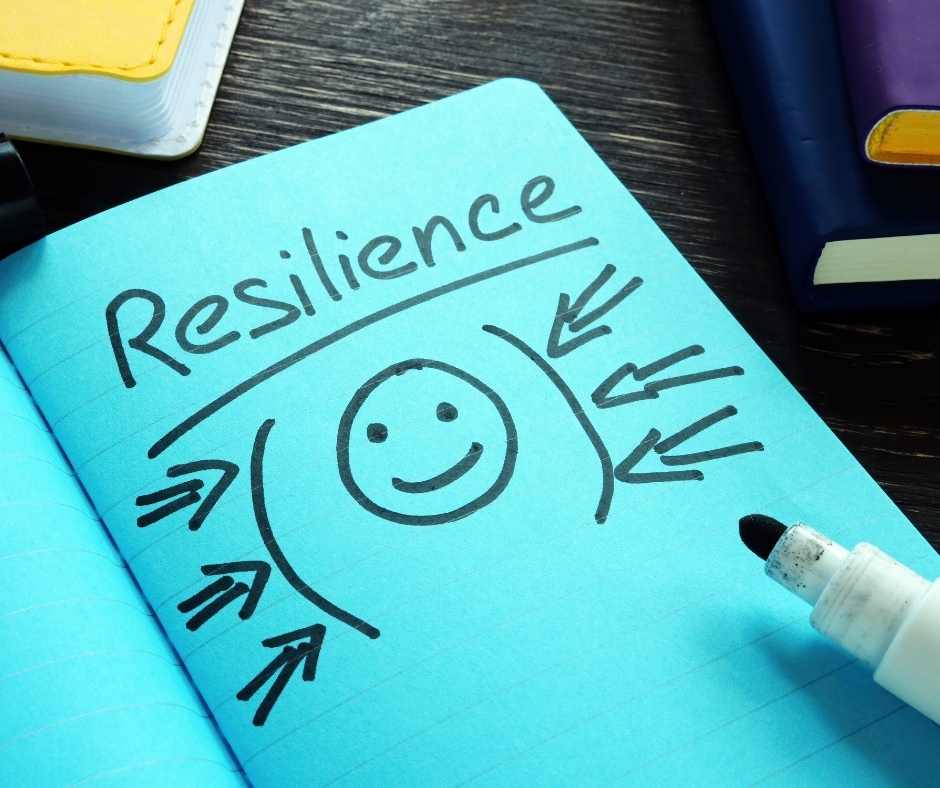Welcome to Wherever You Are
How INXS can help you to become a resilient organisation that can effectively manage the Human and Organisational Factors arising from the COVID-19 Pandemic
The COVID-19 pandemic has caused many organisations to find themselves in a totally different situation when compared to their normal operations. Even organisations that continued operating at pre-pandemic levels are doing so in a very different environment. Many organisations have changed substantially and sadly some have gone. As the roll-out of the vaccine allows us to plan for a return to a more normal life, we need to consider how the connections between organisations have changed, how the system overall has changed and how we cope with the resulting unpredictability in the system.
If you are involved in safety management in any organisation, whether it’s an airline, airport or another field, it is likely that you have many different problems to solve right now. The Together4Safety Air Ops community was created to provide a bank of resources that would save time and effort for those working in safety. Meaning, we created possible solutions to problems that you are facing, which you can put into practice without having to do as much background work.
Harness the spirit of INXS, “Welcome to wherever you are” as an organisation and use this knowledge to orientate your safety efforts.
Follow-up articles
Make sure to check out the follow-up articles below that support this main article.
- Reduced staffing.
- Changes to work as done without changes to procedures.
- Communicating between organisations.
- Dealing with unpredictable events.
Dealing with human and organisational factors as well as the operational ones
So far, most of our articles and guidance material have been about operational safety topics. It is highly likely that you are dealing with many human and organisational challenges – challenges that are not easy to understand and even harder to resolve. In this article, we will start by considering the different situations that organisations find themselves in – it is important to first think about the situation your organisation finds itself in now, when compared with where you were before the crisis.

We will then help you to consider what this means in terms of maintaining a high level of safety during the crisis, and how you can use the principles of change management to identify the actions that you should be taking. We then finish with some examples of different human and organisational factors that you should be considering, and, by way of a follow-up, a series of articles will be released in the coming weeks addressing these topics in greater detail.
Let’s get started….
Launching a recovery from very different starting points
One of the key features of the pandemic is that we are all dealing with very different situations. At one end of the scale, some of you will be working in organisations that have significantly reduced your operations and are faced with how to effectively restart a very complex operation. At the other end of the scale, some of you involved in cargo or HEMS have faced increased activity throughout the duration of the pandemic.
Most of you will be somewhere on the scale between these two points. It is useful to take a moment to consider where you are within this spectrum and what that means to the way you manage safety during the recovery phase. In the intervening period, staff may have been furloughed, became unemployed, while some organisations have significantly reduced their size. While aviation is a complex system, it is vital that we appreciate that the system existing today is not the same complex system that existed prior to February 2020 – It too has been forever changed by COVID-19.
As the prospect of a viable vaccine and recovery comes nearer and we plan the eventual return to normal operating levels, we must plot a path that enables us to understand what has changed and how this affects the way that we manage safety. At the start of June 2020, EASA published the review of safety issues arising from the COVID-19 pandemic, also found that restarting a complex system is in itself a safety issue.
The consequences of the rapid reduction in traffic and eventual recovery of traffic levels put us in a new situation that most of us will never have experienced. Even if your organisation has not changed so much, the wider aviation system in which it operates is very different from the one that existed at the start of 2020. How we deal with this new normal is our key challenge now.
It is likely that you won’t be able to predict how the situation in your organisation or the wider system will evolve in the coming months. However, the change management principles of safety management, as laid out in ORO.GEN.200, provide a great framework to help you cope with what lies ahead. Of course, you are not alone on this journey. The pandemic has highlighted the importance of collaboration and Together4Safety works with regulators and industry to provide information, guidance and support to help you in these challenging times.

The importance of change management in your SMS?
Your safety management system provides the framework to help you keep to better manage the things happening in your organisation. In a previous article, we looked at how your pre-pandemic risk assessments might not be valid in a pandemic and post-pandemic world. The article highlighted the importance of your risk management process in identifying and controlling hazards to your operations. It proposed the following 6 steps to help you understand where you might need to focus your efforts.
- Structure your list of changes by phases of disruption;
- Identify which change(s) can create conditions that may affect the safety of your operations;
- Cross-check your list of safety issues with the ones you identified and addressed during previous crises;
- Consolidate your list of safety issues with the ones identified in published guidance from the aviation communities;
- Focus on the issues where a direct impact on operational safety was identified; and
- Identify and address possible risk transfers.
Of course, the operational staff in your organisation are best placed to identify the safety risks that they face every day. This means that you need to have a robust reporting system that encourages your staff to tell you what is happening – of course that relies on your having a positive culture so that people can feel confident to report. We will cover reporting culture in a lot more detail in other articles.
Examples of complex system change
To help you in managing some of the more complex human factors and organisational aspects of the recovery, the collaborative team has identified a number of examples of complex system changes that you might want to consider from the perspective of your own organisation. We have defined these in a little more detail below and they will be provided as individual articles over the coming weeks.
- Reduced staffing and loss of colleagues – Organisations have changed significantly during the pandemic and most organisations will have lost a large number of people for financial, health and other reasons. Managing this human element will be a key part of the recovery;
- Changes to work as done without changes to procedures – Even before the pandemic we faced normal operational challenges over actual work versus the way something was designed to work. This is a situation often described as “Work as imagined, work as done – WAIWAD”. During the pandemic, it is likely that there has been even less time to update processes and procedures as situations change – it is important to deal with this disconnect and manage it effectively;
- Enhancing communications between organisations – As already discussed, collaboration and cooperation is more important than ever. Other organisations you work with, and or have contractual relationships with, will also have gone through the challenges of the pandemic. Reach out to each other and discuss how this has impacted the interfaces between your organisations; and
- Coping with unpredictable events – While we all love being in control, it is likely that you will not have all the information that you need to understand everything that might happen to your organisation. The more resilient your organisation is generally, the more resilient it will be to unpredictable events and the challenges posed by such events.
To sum up
It is clear that the present situation is a huge challenge for the aviation industry. As traffic increases, organisations and individuals need to be prepared for a system that has adapted to the COVID-19 pandemic and one that is at the same time different from the way it was in 2019.
To be more prepared for this new, unfamiliar system state, it is important to use the risk and change management principles in your SMS to help you and your organisation through the crisis. The key areas, amongst others, are:
- People – Consider how the pandemic has impacted the people your organisation needs to operate safely and effectively;
- Activities – How has the pandemic impacted the activities your organisation is doing, what has changed and how can you make sure that what you think is happening matches the reality; and
- Communicate – Enhance communications between organisations is clear and effective, …;
- Teamwork (Stretching it here to spell PACT) – Ensure that you consider resilient performance principles in assessing your organisation’s ability to provide safe and efficient services.
Although the industry finds itself in dire circumstances, there can be some cautious optimism in terms of the opportunities to learn how systems perform resiliently. These could have a long-term positive effect in improving the way that safety is approached and managed, by focussing on how we deal with new challenges.
When one considers how unprecedented the volcanic ash crisis of spring 2010 appeared at the time, it is clear that techniques to manage large-scale system disruption will remain a necessity. Our preparedness for black swan events, our resilience, and the ability to prepare for the right eventualities in terms of both business and safety risks, remains critical at both a system-wide level and for organisations.


You are not allowed to comment on content in a group you are not member of.
Air Operations